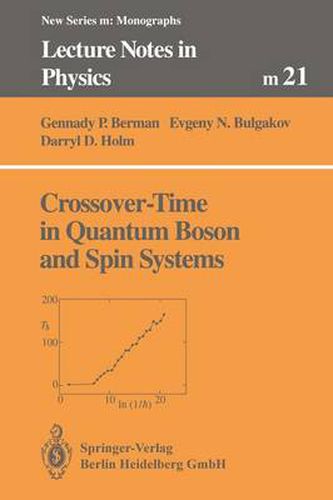Readings Newsletter
Become a Readings Member to make your shopping experience even easier.
Sign in or sign up for free!
You’re not far away from qualifying for FREE standard shipping within Australia
You’ve qualified for FREE standard shipping within Australia
The cart is loading…






This title is printed to order. This book may have been self-published. If so, we cannot guarantee the quality of the content. In the main most books will have gone through the editing process however some may not. We therefore suggest that you be aware of this before ordering this book. If in doubt check either the author or publisher’s details as we are unable to accept any returns unless they are faulty. Please contact us if you have any questions.
We consider quantum dynamical systems (in general, these could be either Hamiltonian or dissipative, but in this review we shall be interested only in quantum Hamiltonian systems) that have, at least formally, a classical limit. This means, in particular, that each time-dependent quantum-mechanical expectation value X (t) has as i cl Ii -+ 0 a limit Xi(t) -+ x1 )(t) of the corresponding classical sys- tem. Quantum-mechanical considerations include an additional di- mensionless parameter f = iiiconst. connected with the Planck constant Ii. Even in the quasiclassical region where f~ 1, the dy- namics of the quantum and classicalfunctions Xi(t) and XiCcl)(t) will be different, in general, and quantum dynamics for expectation val- ues may coincide with classical dynamics only for some finite time. This characteristic time-scale, TIi., could depend on several factors which will be discussed below, including: choice of expectation val- ues, initial state, physical parameters and so on. Thus, the problem arises in this connection: How to estimate the characteristic time- scale TIi. of the validity of the quasiclassical approximation and how to measure it in an experiment? For rather simple integrable quan- tum systems in the stable regions of motion of their corresponding classical phase space, this time-scale T usually is of order (see, for example, [2]) const TIi. = p,li , (1.1) Q where p, is the dimensionless parameter of nonlinearity (discussed below) and a is a constant of the order of unity.
$9.00 standard shipping within Australia
FREE standard shipping within Australia for orders over $100.00
Express & International shipping calculated at checkout
This title is printed to order. This book may have been self-published. If so, we cannot guarantee the quality of the content. In the main most books will have gone through the editing process however some may not. We therefore suggest that you be aware of this before ordering this book. If in doubt check either the author or publisher’s details as we are unable to accept any returns unless they are faulty. Please contact us if you have any questions.
We consider quantum dynamical systems (in general, these could be either Hamiltonian or dissipative, but in this review we shall be interested only in quantum Hamiltonian systems) that have, at least formally, a classical limit. This means, in particular, that each time-dependent quantum-mechanical expectation value X (t) has as i cl Ii -+ 0 a limit Xi(t) -+ x1 )(t) of the corresponding classical sys- tem. Quantum-mechanical considerations include an additional di- mensionless parameter f = iiiconst. connected with the Planck constant Ii. Even in the quasiclassical region where f~ 1, the dy- namics of the quantum and classicalfunctions Xi(t) and XiCcl)(t) will be different, in general, and quantum dynamics for expectation val- ues may coincide with classical dynamics only for some finite time. This characteristic time-scale, TIi., could depend on several factors which will be discussed below, including: choice of expectation val- ues, initial state, physical parameters and so on. Thus, the problem arises in this connection: How to estimate the characteristic time- scale TIi. of the validity of the quasiclassical approximation and how to measure it in an experiment? For rather simple integrable quan- tum systems in the stable regions of motion of their corresponding classical phase space, this time-scale T usually is of order (see, for example, [2]) const TIi. = p,li , (1.1) Q where p, is the dimensionless parameter of nonlinearity (discussed below) and a is a constant of the order of unity.